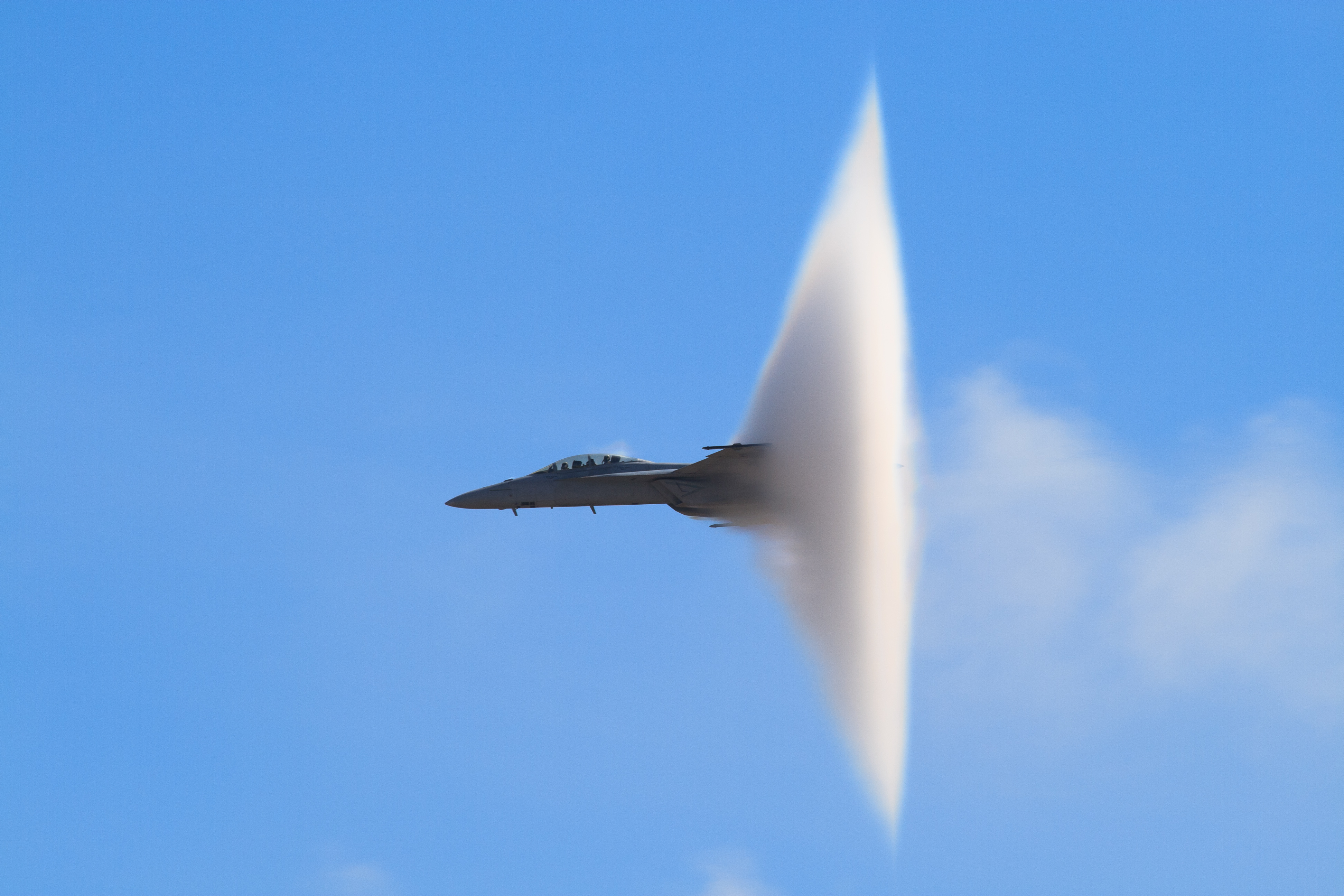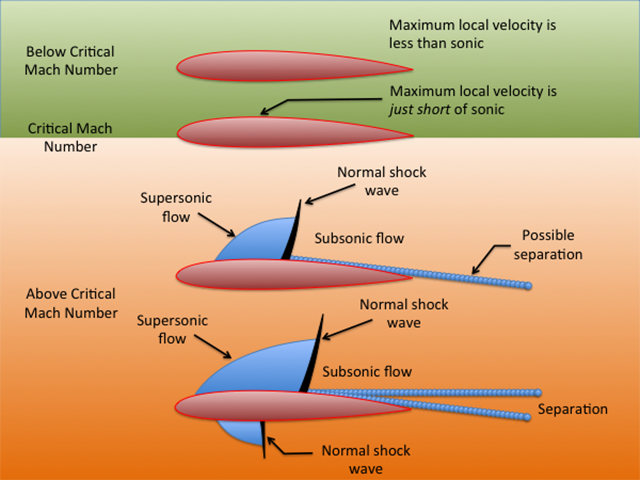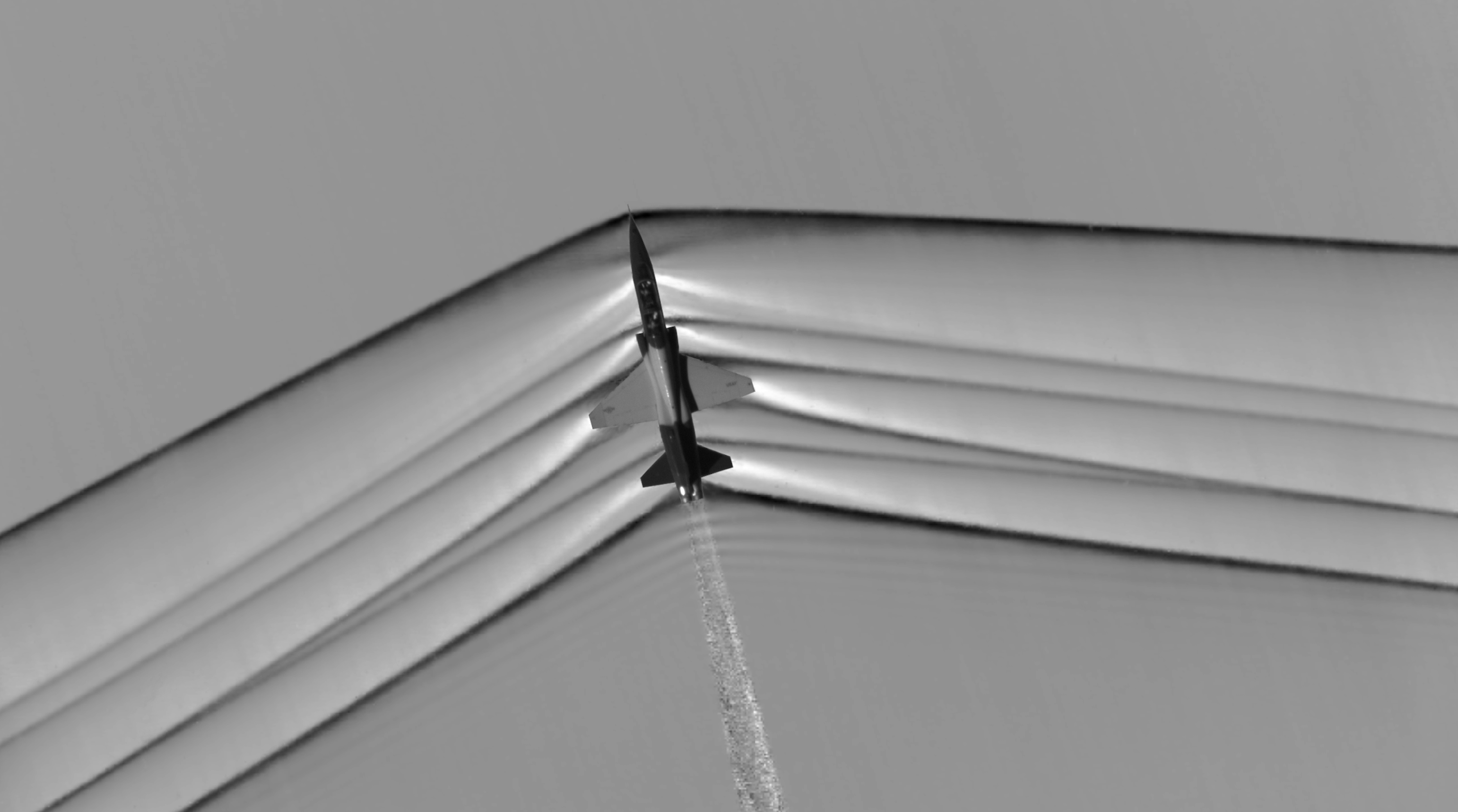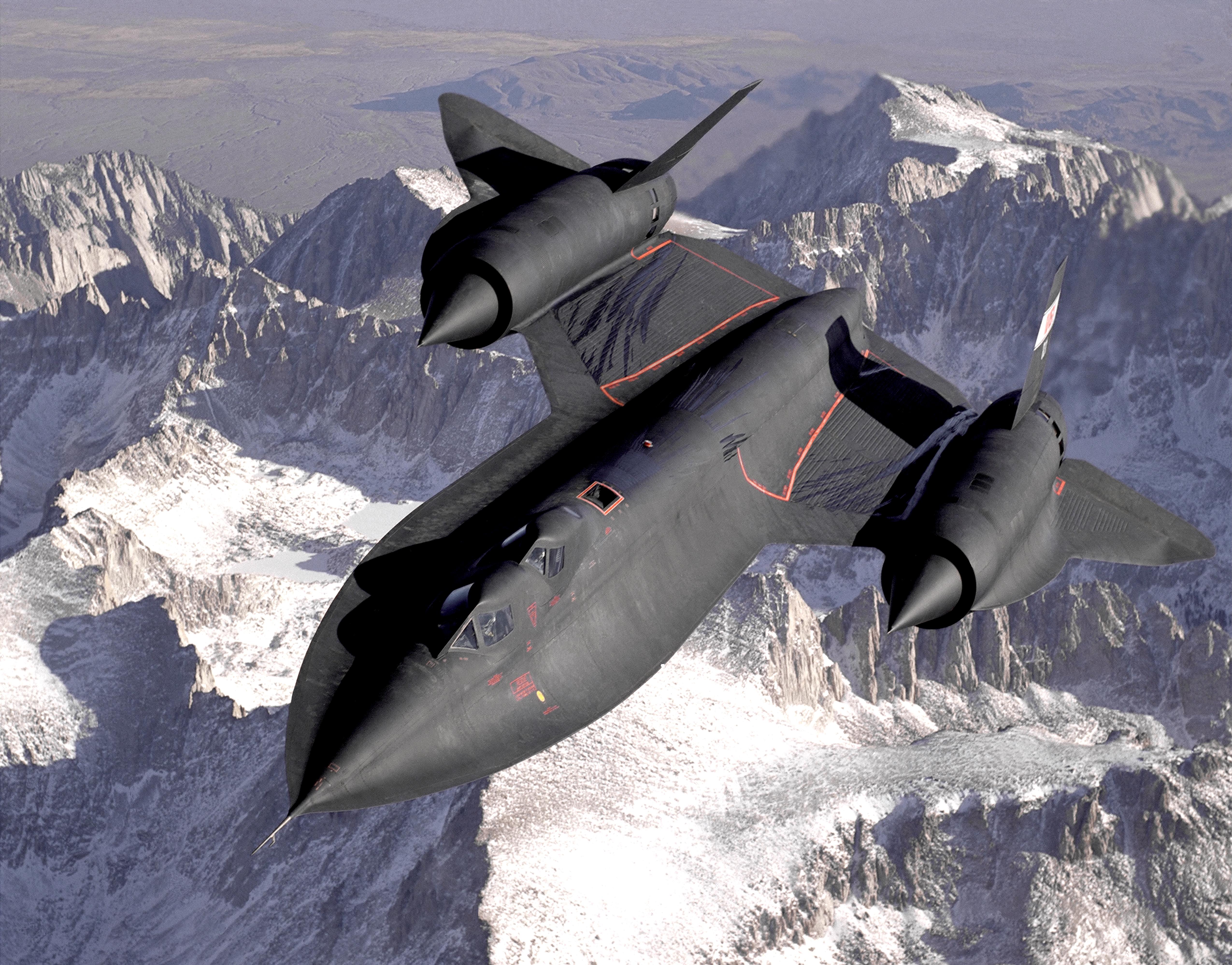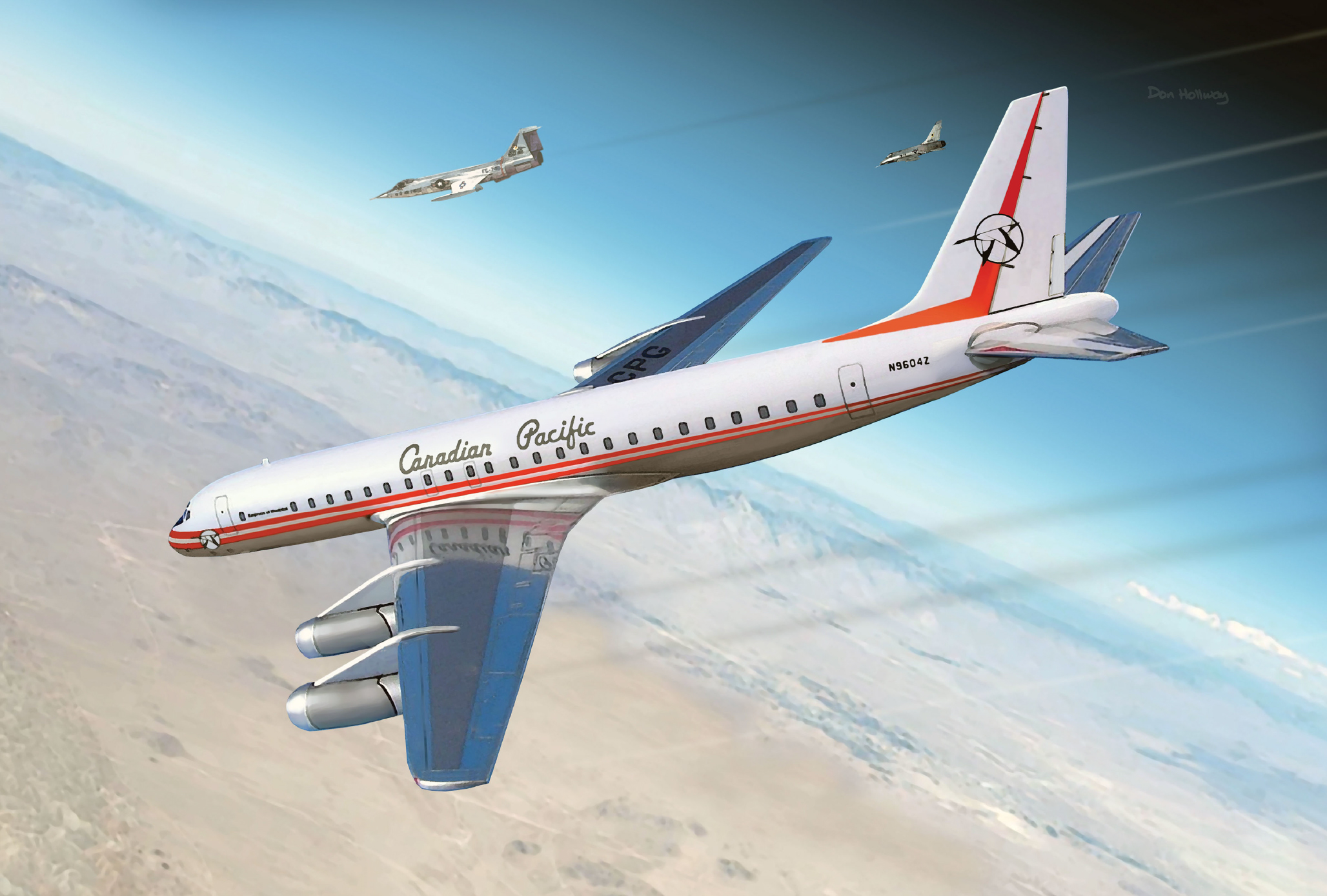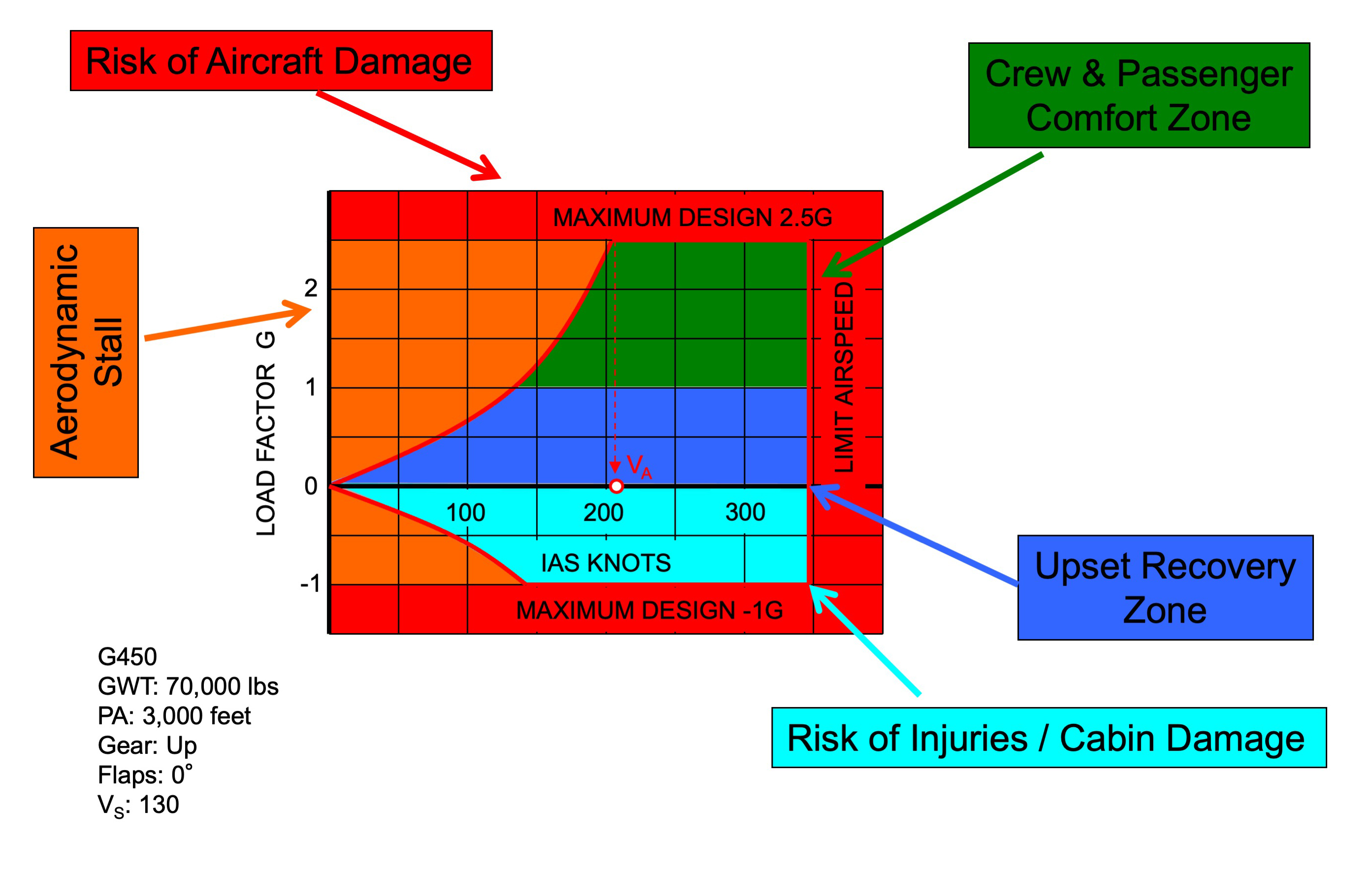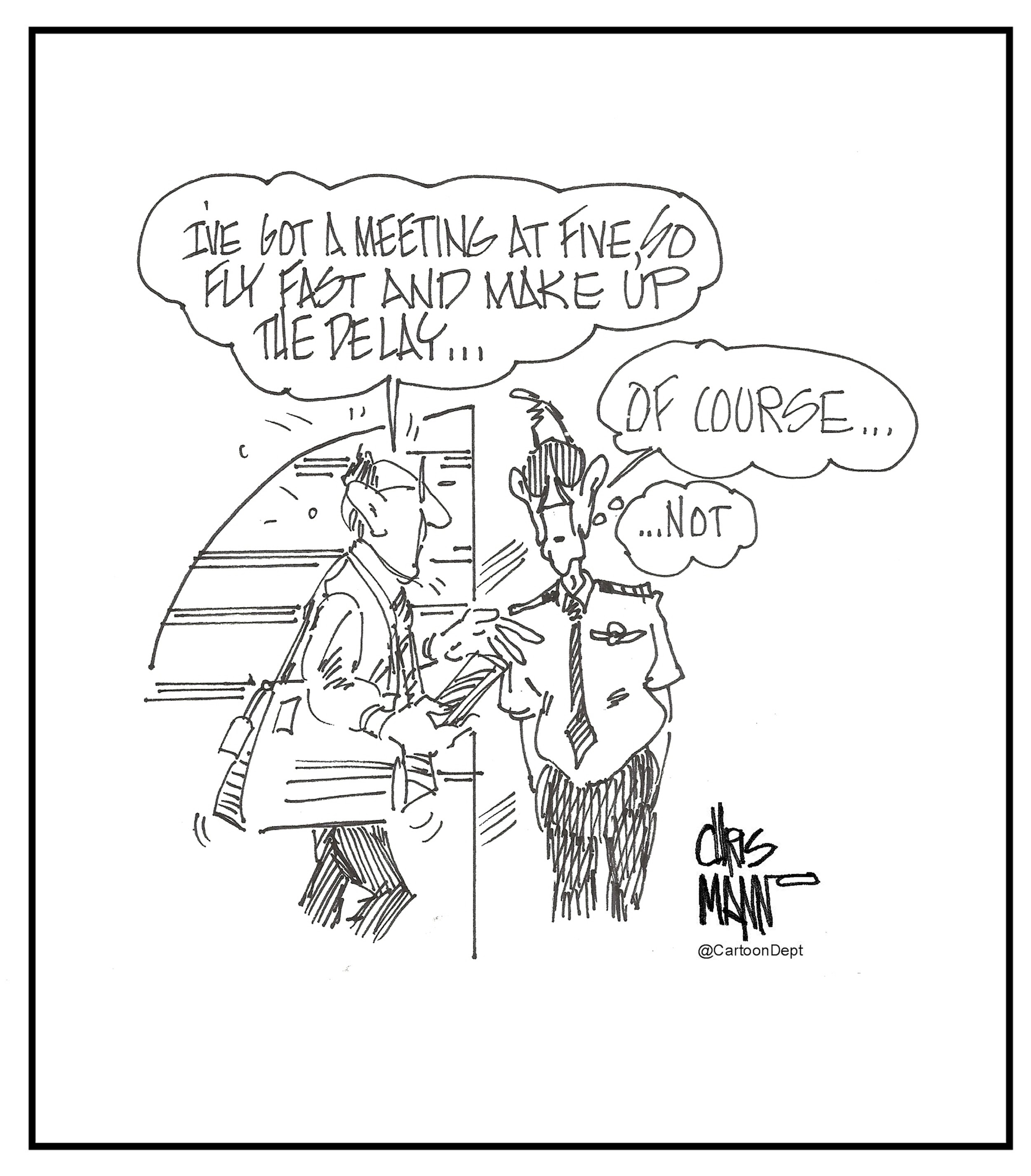Do you have a need for speed? The desire to go supersonic if you can, or as fast as the airplane will allow otherwise? Or perhaps what you have is a need to get to where you are going in minimum time. No matter the need, the process of getting that extra speed could be dangerous or may not yield the time savings you hoped for.
— James Albright

Updated:
2022-07-15
You might be surprised that going supersonic isn't as thrilling as the movies make it out to be. In fact, I think you will get a greater sensation of speed flying a crop duster than a fighter jet. So if you have a need for speed, find a crop duster. But there are a lot of other considerations before you decide to bend the throttles forward.
1 — How fast can you go? (Physical limits)
2 — How fast should you go? (Transport category design)
3 — How does going fast "feel," from those that have gone "really" fast?

1
How fast can you go? (Physical limits)
Critical Mach
Recall that the speed of the air over the wing is greater than that of the wing (and therefore the aircraft) itself.
- If the flight Mach number increases, so does the local velocity on top of the wing. At some flight Mach number the local maximum velocity reaches sonic speed, M = 1.0. This flight Mach number is called the critical Mach number.
- Once MCRIT is exceeded, the aircraft is flying in the transonic speed range. Supersonic airflow exists in the area of maximum thickness on top of the wing, subsonic flow exists elsewhere.
- As the air flows through the normal shock wave it undergoes a rapid compression. The compression decreases the kinetic energy of the airstream and converts it into a pressure and temperature increase behind the shock wave. The heat rise behind the shock wave is either radiated to the atmosphere or absorbed by the wing surface, but in either case it is lost, and this lost energy must be continuously supplied by the engines. This energy loss represents a type of drag known as wave drag.
Source: Dole, p. 217
Flying above critical Mach increases induced drag and may introduce Stability and Control issues.
More about this: High Speed Flight / Critical Mach
Force divergence
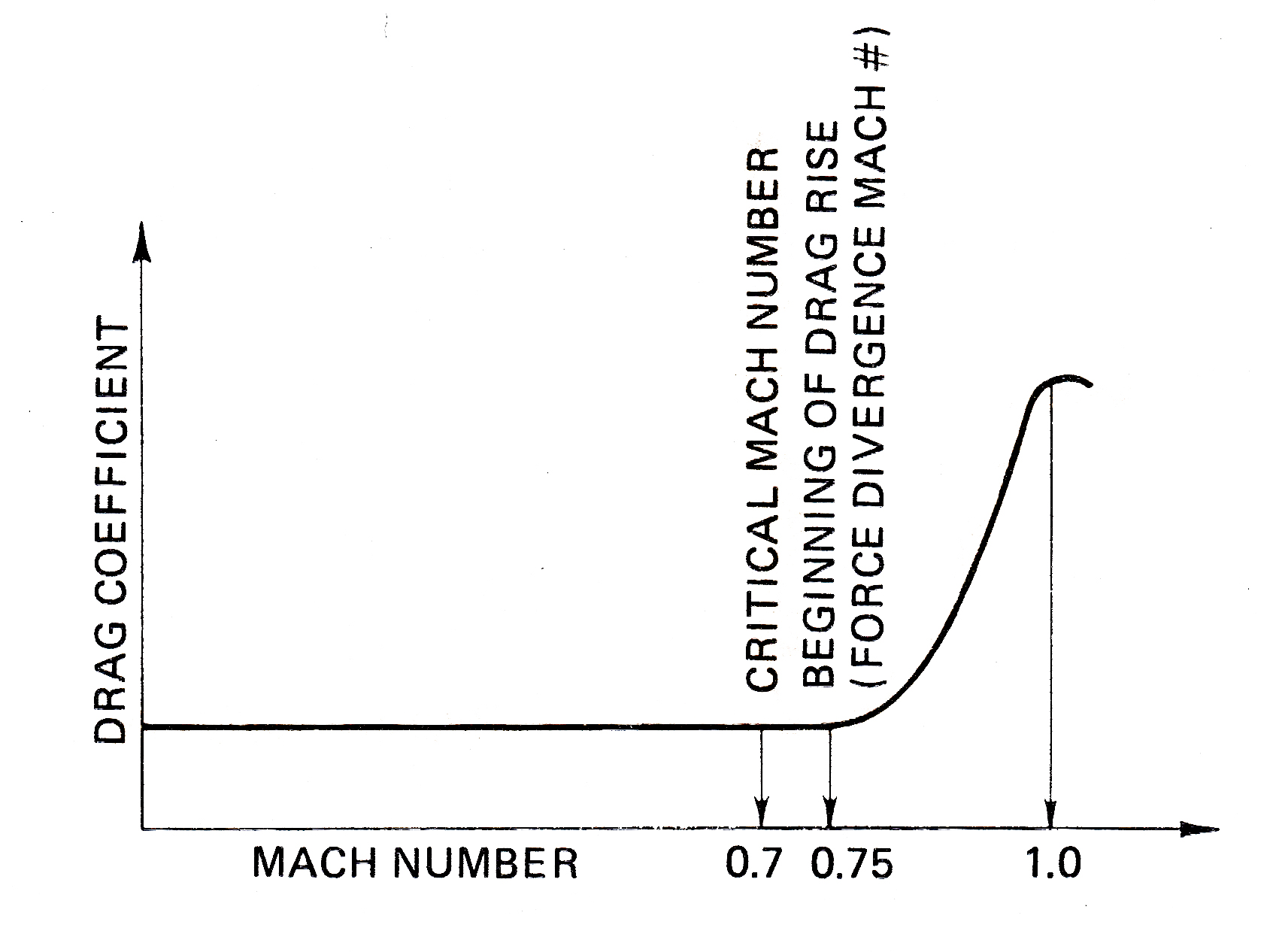
Force divergence effect,
Dole, fig. 7.14
At airspeeds of about 5% above MCRIT the normal shock wave on the top of the wing causes the boundary layer to separate from the wing. This causes a change in the aerodynamic force coefficients, both CL and CD. This airspeed is called the force divergence Mach number.
Source: Dole, p. 221
I've also seen this labeled the "Drag Divergence Mach number." The key point is that the drag coefficient is constant until the critical Mach number, and then it goes up sharply.
Thrust required
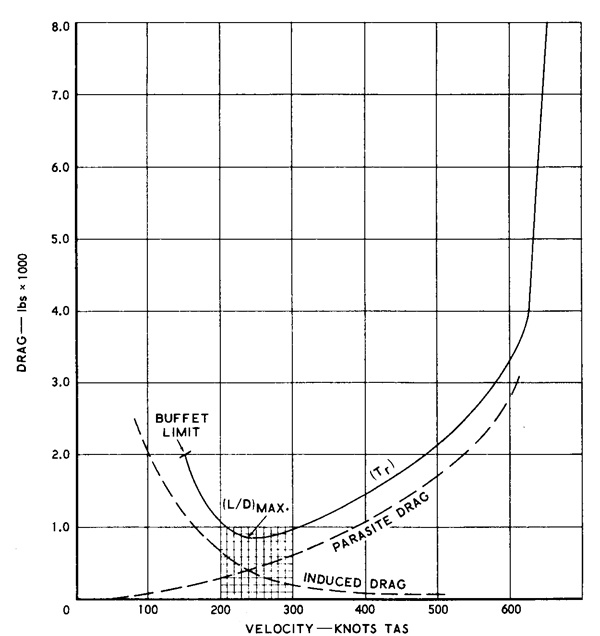
T-38 Drag Curve, from [Dole, pg. 68].
Measuring thrust from a jet engine in flight is extraordinarily hard to do. They are typically mounted to a test stand and restrained from moving and connected to a force gauge. The result is static thrust. In unaccelerated flight, however, we know thrust = drag. Fortunately it is far easier to measure drag in a wind tunnel.

T-38 Thrust-Required, from [Dole, pg. 69].
As can be seen from the two graphs, the charts are equal for level, unaccelerated flight. The thrust = drag, after all. There comes a time when you simply run out of thrust.
For more about this, see: Thrust.
Adverse impact on aircraft control
The list of problems of exceeding an aircraft's designed top speed is a long one. Just a few to consider:
The downwash behind the wing will be decreased when airflow separation takes place. This will result in the horizontal stabilizer AOA being effectively increased, and it will develop more lift. This is one of the factors that causes the aircraft to pitch nose down; it is commonly called tuckunder.
The violently turbulent separated air behind a normal shock wave often produces buffeting of the aircraft. This is most commonly caused by the airflow hitting the horizontal stabilizers.
Boundary layer separation acting on control surfaces often causes rapid oscillation called buzz. This can cause metal fatigue problems to hinge fittings and other parts of control surfaces.
Shock-induced separation can reduce the effectiveness of control surfaces in two ways. First, the surface that is located in a region of stalled air is operating in an aerodynamically dead air mass and therefore cannot produce effective aerodynamic forces. Second, control surfaces are effective if they change the airflow around the entire wing or stabilizer. When there is a shock wave ahead of the control surface, deflection of that surface cannot influence the airflow ahead of the shock, and thus what little aerodynamic force is developed is restricted to the control surface and area behind the show wave.
Source: Dole, p. 222 - 224
Structural integrity
At lower altitudes, exceeding VMO by a significant amount is a real threat and can dramatically affect the integrity of the aircraft’s structure.
Source: de Baudis, p. 8
There isn't a lot published about aircraft coming apart when flying too fast, other than from the days of "pushing the envelope" without the aid of high-speed computers. I do have a few examples below: The structures can fail.
So . . . how fast can you go?
How fast? At a certain point you run out of thrust and in level flight you can't go any faster because drag overwhelms thrust. But if you point the nose down you can go faster, but the aircraft becomes difficult to impossible to control and parts of the aircraft may fail.
2
How fast should you go? (Transport category design)
We all know the answer but we also know the counter-answer some will give. But first, the official answer:
VMO/MMO
VMO/MMO means maximum operating limit speed.
Source: 14 CFR 1
Allowing for pilot reaction time after effective inherent or artificial speed warning occurs, it must be shown that the airplane can be recovered to a normal attitude and its speed reduced to VMO/MMO, without—
(i) Exceptional piloting strength or skill;
(ii) Exceeding VD/MD, VDF/MDF, or the structural limitations; and
(iii) Buffeting that would impair the pilot's ability to read the instruments or control the airplane for recovery.
Source: 14 CFR 25, §25.253(2)
Of course there are a lot of other V-speeds in there, leading some to say, "A ha! You can go faster!" I once flew an Air Force aircraft with a MMO of Mach 0.85 and knew of a pilot in our squadron who routinely took it to Mach 0.88 in a dive. When I protested, he said, "Relax! The engineers pad all our numbers by fifty percent!" I told him that Mach 0.85 plus 50% comes to Mach 1.275. But clearly the aircraft is flown faster for certification. How much faster?
As it turns out, the "pad" provided is at least Mach 0.05 but it is understood the aircraft will be returned to VMO/MMO. In an Airbus A320, for example, MMO is Mach 0.82 and MD is Mach 0.89. More about this: VMO.
Is getting into that pad a problem?
At high altitude, whilst it is important to always respect MMO, a slight and temporary Mach increase above that value will not lead the aircraft into an immediate hazardous situation.
At lower altitudes, exceeding VMO by a significant amount is a real threat and can dramatically affect the integrity of the aircraft’s structure.
Although intentional VMO/MMO exceedance cases are rare, this limit speed can typically be overshot when the aircraft is subject to unusual wind and/or temperature gradient. Prevention is therefore essential.
Source: de Baudis, p. 8
So . . . how fast should you go?
The correct answer is: no faster than VMO/MMO. But you should also realize that if conditions push you beyond, you have full control to smoothly and positively bring the airspeed back down to within limits and should do so in a controlled manner. (There is no need for abrupt maneuvers.)
3
How does going fast "feel," from those that have gone "really" fast?
Going supersonic is cool!
It must be pretty neat to "break the sound barrier." You might be surprised about what a "non-event" it really is. Most of my supersonic time is limited to the T-38 Talon. Before we get to how it "feels," let's look at what an amazing thing it is.
The photo was taken by a high speed camera mounted on the bottom of a Beechcraft B-200 King Air as a T-38 Talon flies underneath at supersonic speed. By filtering out the background and other post-processing techniques, the distortions created by the shock waves and the aircraft jet engine exhaust are revealed.
The early attempts to get through Mach 1.0 were hampered by a lack of power, flight controls not meant to fly with shock wave interference, and the odd problem of the air not being able to get out of the way fast enough. The T-38 solved these problems with modest after-burning engines, sleek flight controls, and the "coke bottle" shape of the fuselage that adheres to what is known as the area rule. (The area added by the wings is subtracted from the fuselage.) My impressions of going supersonic in the T-38:
- There is no appreciable change in control feel, before, during, or after Mach 1.0.
- There is no appreciable change in pitch, roll, or yaw.
- There is no appreciable change in sound inside the cockpit.
- The only indication of going supersonic is a jump in all pitot static instruments as the shock wave passes the pitot tube and static ports, and the jump in the fuel flow gages.
So that's the T-38, limited to a measly Mach 1.2. What about something really fast?
I have several friends who have flown the SR-71 (top speed Mach 3.3), F-111 (top speed Mach 2.5), and F-4 (top speed Mach 2.2), and all report the same ho hum reaction to going supersonic.
To feel fast you need to be low
Notice the SR-71 (known officially as the "Blackbird" but sometimes called "Habu") photo was taken with the Sierra Nevada mountains in the background to attempt to give some perspective and the feel of some speed. Even from the cockpit, you never really feel fast unless you are low enough to see the ground rush by. Case in point, the Jedi Transition low level training route in California.
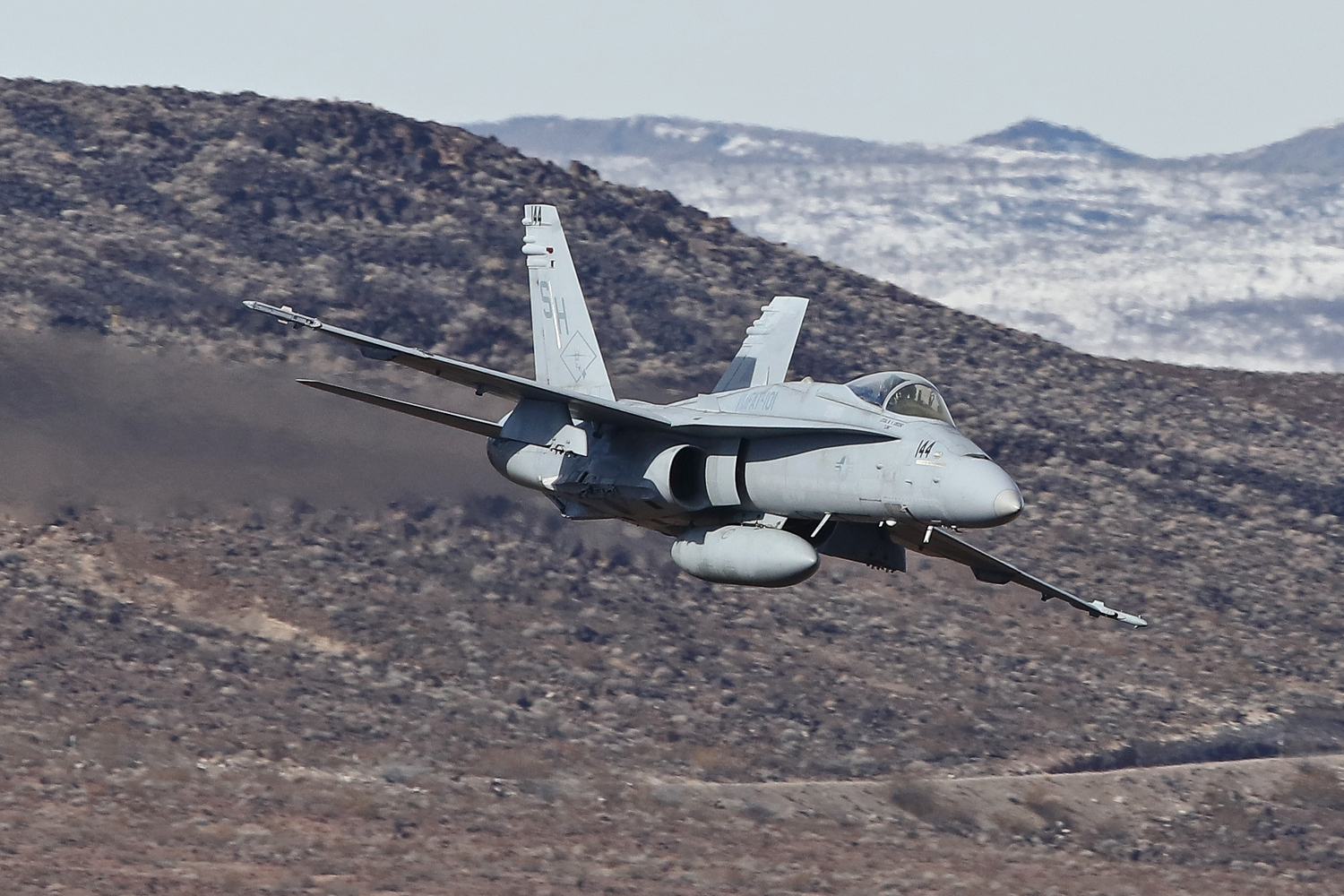
FA-18C, Jedi Transition, March 2017, Matt Birch (http://visualapproachimages.com/)
No doubt about it, the FA-18 (officially known as the "Hornet"), top speed Mach 1.8, is fast. These pilots are trained to fly low and fast, have the route memorized, and that route itself if cordoned off to keep things safe. With the heat plumes from the jet exhaust and the blur of the background, it looks fast. So is this the restricted domain of very fast, very sleek fighters? Not really.

Two C-130H, Jedi Transition, October 2017, Matt Birch (http://visualapproachimages.com/)
Here we have two C-130s (officially known as the "Hercules"), top speed 320 knots at 20,000 ft (Mach 0.51) flying the Jedi Transition. This kind of flying does impart a "feel" after all:
So . . . how does it feel satisfying your need for speed?
In my opinion, there is no "feel" to flying fast unless you are very low to the ground and when you are very low to the ground, it doesn't take much speed to feel fast!
4
What can go wrong?
Flying faster than the designed limit, makes you the test pilot
In August 1961, the Douglas Aircraft Company decided their four-engine airliner needed some positive press to compete with the iconic Boeing 707, so why not go supersonic? Why not, indeed. They selected a DC-8 named "Empress of Montreal," this was back in the day most large airliners were given names, like oceanliners. It would be flown by William Magruder and much of the information was relayed by flight test engineer Richard H. Edwards.
The DC-8 was decidedly subsonic, designed to cruise at 542 mph at 35,000 feet (Mach .82). Douglas put a whole team of engineers to work on the math.
The test was to be conducted about 80 miles to the north, over Askania Tracking Range at Edwards Air Force Base in the California desert. On the way up the DC-8 rendezvoused with a two-seat North American F-100F Super Sabre camera ship and a Lockheed F-104 Starfighter chase plane flown by Magruder’s old friend Yeager) provided by the USAF Flight Test Center, which also supplied a weather balloon to verify speed and atmospheric data. Over the southern tip of Rogers Dry Lake, Magruder leveled out at 50,090 feet, in itself a record for a civil airliner at that time. “The thing that impressed me the most was the dark, black sky,” recalled Edwards. “I’d never seen anything like that.”
From that altitude, the rest of the flight would be downhill all the way. It was Edwards’ job to know when they crossed the magic number. “The Mach number itself isn’t used in a dive as a target because it’s much more accurate to use airspeed,” he explained. “So every thousand feet I would read off to Bill the airspeed at the next altitude. As we were coming down, I was talking almost all the time because at a descent rate of 500 feet per second, every two seconds we were 1,000 feet lower. Looking out the window—which I stopped doing—it looked like it was straight down.”
As the airliner neared Mach 1 it compressed the air moving over it into shock waves, capable of tearing a poorly designed aircraft to pieces. “At .96 Mach it buffeted for a while,” remembered Edwards, “…and a little above .96 it went away.”
But shock waves can also affect control surfaces, to the point of reducing or even reversing pilot input. “I had mounted some cameras in the middle of the airplane, shooting out each window,” Edwards recalled. “I wanted to catch the chase airplanes out there, but I never saw the chase airplanes in the pictures. But it did show the ailerons flapping up as the shock wave left—I think it was about .97 Mach. They went up about five degrees, I think—both sides, fortunately.”
Magruder held the yoke steady as Empress made history. “In the dive, at about 45,000 feet, it went to Mach 1.01 for maybe 16 seconds,” said Edwards. In fact, at 41,088 feet the DC-8 recorded Mach 1.012, 660.6 mph at that altitude. By then Magruder was already starting to pull out, but as Edwards recalled, “The recovery was a little scary.”
When Magruder eased back on the yoke to pull out of the dive, the plane barely responded. The elevators, not designed to operate at such speed, could not overcome the supersonic airflow. The DC-8 was out of control, hurtling earthward at just over Mach 1, and in less than a minute would impact the desert floor…unless it tore apart in midair first.
“Well, I’ll use the stabilizer,” said Magruder. Besides the elevators on their trailing edges, the DC-8’s horizontal tailplanes (also called stabilators) could rotate as one piece—at least, at subsonic speeds. At 39,614 feet the DC-8 hit a maximum true airspeed of 662.5 mph.
“The stabilizer wouldn’t run . . . . because of the load,” recalled Edwards. In the high-speed pullout, with the airliner ever so slightly nose-up to the wind, the motor controlling the tailplane angle literally couldn’t overcome the air pressure under the tail.
“What [Magruder] did, because he was smart, is something that no other pilot would do,” said Edwards. “He pushed over into the dive more, which relieved the load on the stabilizer.”
It was unconventional thinking—increase the dive rate to pull out of a dive? But as soon as Magruder stopped trying to pull out, the airliner “straightened out” into the wind, and the reduced air pressure allowed the tailplane motor to function and the stabilators to bite into the airflow. They “recovered at about 35,000 feet,” Edwards noted, no doubt with a sense of relief.
Source: Hollway
There was a tremendous amount of luck in this flight. They had jumped from previously demonstrated dive speeds all the way up to Mach 1, not knowing about the impact on their flight controls until they were deep into it. I doubt they had tested any of this in a wind tunnel and it may be that the wind tunnels of the day were not up to the task. In retrospect, using the stabilizer in place of the elevator make sense, but that comes from my perspective of flying aircraft which use the stabilizer as a means of trimming the elevator.
Your aircraft has been flight tested up to what is called design diving speed (VD/MD) to ensure the controls work correctly and there is adequate response to bring it back to VMO/MMO. If you fly the aircraft above VD/MD, you have no idea how it will behave.
Controls are more sensitive
As pilots, we develop muscle memory to teach ourselves how much force on the yoke, stick, or rudder pedals produce how much control deflection. In some cases, the aircraft through mechanical or electronic means changes this. But in some cases, it doesn't. I've flown aircraft where the controls become heavier with added speed, others where they become lighter, and others where the control feel doesn't change at all. It is important that you get to know your aircraft, especially when you find yourself at very high speeds.
Case in point: in 2017 a Virgin Australia Boeing 737 was in its descent to Adelaide, South Australia, when instructed to perform a high speed descent. The first officer used the autopilot to descend at 320 kts., 20 kts. below VMO.

Airspeed indications,
ATSB, figure 2
Airspeed then started to increase, first gradually, then more rapidly. The flight crew observed the indicated airspeed approaching VMO (maximum operating speed), and the FO observed the airspeed trend indicator move past the lower band of the red bars on the primary flight display airspeed indicator. Both pilots expressed statements of concern and alarm.
The captain called ‘pull-up’ while also making two abrupt nose-up inputs on the left (captain-side) control column. The first was 49 lb (about 22 kg), which caused the autopilot to disconnect. The captain abruptly released the controls and then made a second control input of 28 lb (about 13 kg) about 4 seconds later.
Source: ATSB Safety Report, pp. 2 - 3
The initial 49 lb. pull followed by an abrupt release and another pull must have resulted in some brief negative-g and then positive-g. The seat belt sign was off, but fortunately the 151 passengers were seated. Two of the flight attendants were not so lucky and were injured, one with a broken leg.
The aircraft was perfectly flyable and was not damaged. The captain appeared to be overly concerned with keeping below VMO and wasn't aware that he could react more calmly and had some "padding" above the limiting speed to bring the aircraft back within his limitations. More about this: Virgin Australia VH-VUE.
The structures can fail
Other than during test flights back in the days before high-speed computers, there haven't been many instances of structural failures due to excess speed. But there have been a few.
On September 20, 1958, an Aero Vulcan flew too fast during a low pass, exceeded the g-limit of the leading edge structure, and the aircraft disintegrated. More about this: 1958 Syerston Avro Vulcan Crash.
On December 19, 1997, a SilkAir Boeing 737 entered a high-speed dive and broke up on its way down. More about this: SilkAir Flight 185.
On January 31, 1999, an EgyptAir Boeing 767ER entered a high-speed dive, causing the left engine and portions of the wing to break off. More about this: EgyptAir Flight 990.
It seems a point not needing mention, but I'll mention it anyway. If you fly faster than the aircraft was designed to fly, you risk the aircraft disintegrating into its non-flying parts.
5
How much time does it really save?
I hope I've made it clear that there is no reason to explore the part of the flight envelope beyond the limiting airspeed. The "envelope" is normally drawn on a V-G diagram, with speed (the "V") drawn on one axis and the g-loading (obviously the "G") on the other. But what about the "need for speed" that falls within your envelope. Why not?
If it saves time, why not?
There is no doubt you can make it coast-to-coast faster in an SR-71 than a Citation Mustang. Of course that is a ridiculous comparison. A Gulfstream GVII will get you from New York to Frankfurt at least a half hour sooner than a Falcon 8X. But if you are flying in a Falcon 8X what good does that knowledge do you?
These are decisions we face whenever we "stretch our legs" on longer flights. It may help to consider a few aircraft as examples.
Gulfstream GIII
The Gulfstream GIII had a nice time/fuel relationship that made decision making a bit easier:
- Flying Mach 0.03 faster than Mach 0.80 gains you 3 minutes per hour but costs you 300 pounds of fuel per hour.
- Flying Mach 0.03 slower than Mach 0.80 loses you 3 minutes per hour but saves you 300 pounds of fuel per hour.
We used that rule all the time, but was it true? Doing the math at FL 310, FL 350, and FL 390, it turns out the time loss or gain was between 2 minutes 10 seconds and 2 minutes 25 seconds.
What about a more fuel efficient aircraft?
Gulfstream GV
The Gulfstream GV has cruise charts for Mach 0.80, 0.83, and 0.85.
| FL 390, ISA, 65,000 lbs. | 1 hour Δ | |||
| Mach | TAS | ANMPP | Δmin:sec | Δlbs. |
| 0.80 | 458.9 | .1648 | -2:15 | +96 |
| 0.83 | 476.1 | .1595 | — | — |
| 0.85 | 487.5 | .1508 | +2:31 | -172 |
The time differential remains small because the speed differential is small. The fuel cost and savings are surprisingly small too.
What about an ever wider speed range?
Gulfstream GVII
The GVII normally cruises at Mach 0.90 but offers charts for Mach 0.80, 0.85, 0.90, and 0.91. I'll use 0.85 as the baseline. (The fuel numbers are for the G500 version of the GVII.)
| FL 390, ISA, 65,000 lbs. | 1 hour Δ | |||
| Mach | TAS | ANMPP | Δmin:sec | Δlbs. |
| 0.80 | 458.9 | .1847 | -3:44 | +75 |
| 0.85 | 487.5 | .1796 | — | — |
| 0.91 | 521.9 | .1445 | +3:57 | -660 |
GVII operators should know their aircraft are not efficient at lower speeds and you don't save a lot of fuel pulling it back to Mach 0.80. Pushing it up, on the other hand, can gain you almost four minutes every hour.
Note: You will need to run your own fuel numbers but you can run the time figures on your own without any math, a slide rule, or a calculator: https://www.hochwarth.com/misc/AviationCalculator.html.
The old rule of thumb from our GIII seems pretty close, but the 3 minutes for Mach 0.03 was a bit optimistic. Further, the relationship gets worse as the change in speed increases. But it is useful, nonetheless:

Above 30,000 feet, an adjustment of Mach 0.01 impacts the time by approximately one minute every hour.
I've never found a good relationship between speed and fuel burn in any aircraft since the GIII.
Discard the old rules of thumb, find new ones
I've flown with a few GV pilots who used GIV fuel planning ideas that clearly didn't work in the new aircraft. Now in the GVII I have had to rethink my ideas about fuel and timing.
You should also consider how much time you are actually saving when you push it up. Let's say you have a five hour flight with the first hour taken by the climb and the last hour with the descent, so your only real opportunity to speed up is during cruise, say 3 hours. If going from Mach 0.80 to Mach 0.83 only gains you 2:30 minutes per hour, you will end up in the chocks about 8 minutes sooner. Is that worth the extra fuel? It might be, but there are other things to consider:
- Per hour or calendar rates?
- Per hour or salaried crew?
- Carbon schemes?
- Passenger/company priorities?
- Selected speed versus aircraft limitations?
Do you pay for your aircraft or engine maintenance by the number of hours flown or based on the calendar date? The difference could more than make up for extra fuel burns.
Are you paying your crews by the hour or are they on a salary? Hourly crew costs can overwhelm fuel costs.
Are you paying carbon credits based on fuel burn? That cost may impact all others.
None of these concerns may outweigh the fact your boss, the person paying all the bills, wants you to spare no expense to get there even a minute sooner.
One factor might outweigh the others, depending on how closely to MMO your aircraft normally cruises. In the GV example, it was quite easy to go from normal cruise of Mach 0.83 to Mach 0.85, because the higher speed was still 0.035 below MMO. In the GVII we normally cruise at Mach 0.90 but have the option to go to Mach 0.91. I never do that, because MMO is just 0.15 away.
If you want to see how the various fixed and variable costs impact your speed considerations, see: Range Performance / Range economy.
Your answers will be different than mine. More importantly, your answers today might be different than they were in your previous aircraft or operation. Thinking about them now will help you make a better decision the next time someone in back says, "hurry it up!"
References
(Source material)
14 CFR 1, Title 14: Aeronautics and Space, Definitions and Abbreviations, Federal Aviation Administration, Department of Transportation
14 CFR 25, Title 14: Aeronautics and Space, Federal Aviation Administration, Department of Transportation
De Baudis, Lorraine, and Castaigns, Philippe, Control your speed . . . in cruise, Safety First, Airbus Product Safety Department, 21 January 2016
Dole, Charles E., Flight Theory and Aerodynamics, 1981, John Wiley & Sons, Inc, New York, NY, 1981.
Hollway, Don, How quick thinking saved the first airliner to break the sound barrier, Historynet, 1/31/2022
Jet Transport Performance Methods, Walt Blake and the Performance Training Group, Flight Operations Engineering, Boeing Commercial Airplanes, D6-1420, 2009.
Overspeed and pitch up resulting in cabin crew injury involving Boeing 737, VH-VUE, 42 NM ESE Adelaide Airport, South Australia, on 13 September, 2017, Australian Transport Safety Bureau (ATSB) Transport Safety Report, Aviation Occurrence Investigation, AO-2017-092, Final, 30 September 2020.
Please note: Gulfstream Aerospace Corporation has no affiliation or connection whatsoever with this website, and Gulfstream does not review, endorse, or approve any of the content included on the site. As a result, Gulfstream is not responsible or liable for your use of any materials or information obtained from this site.
